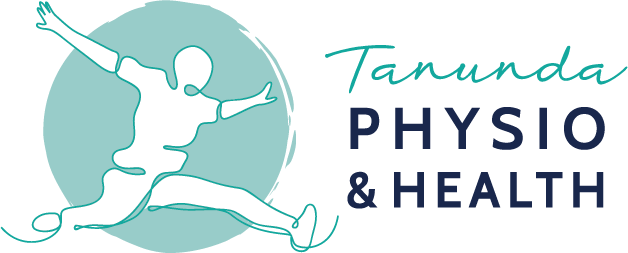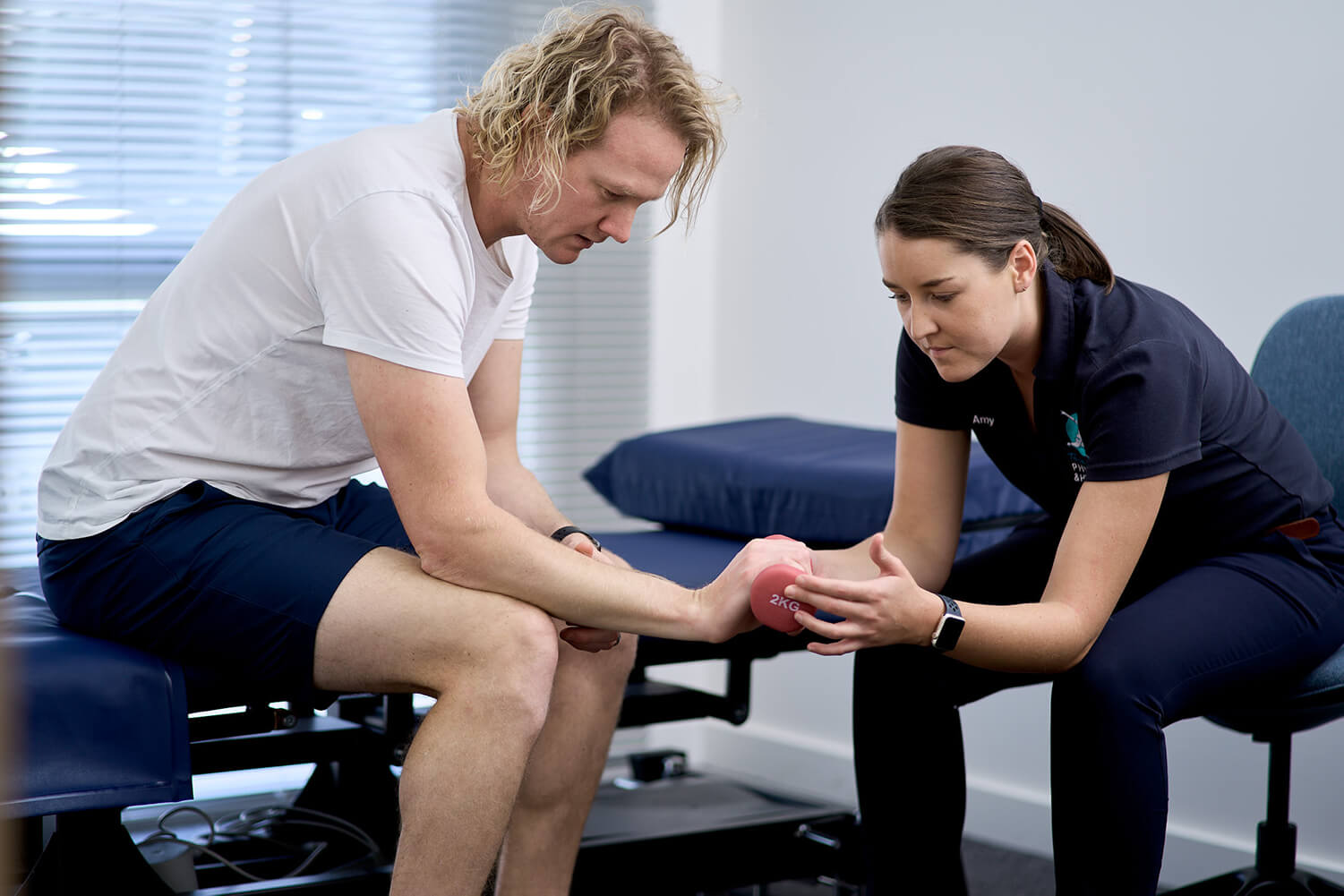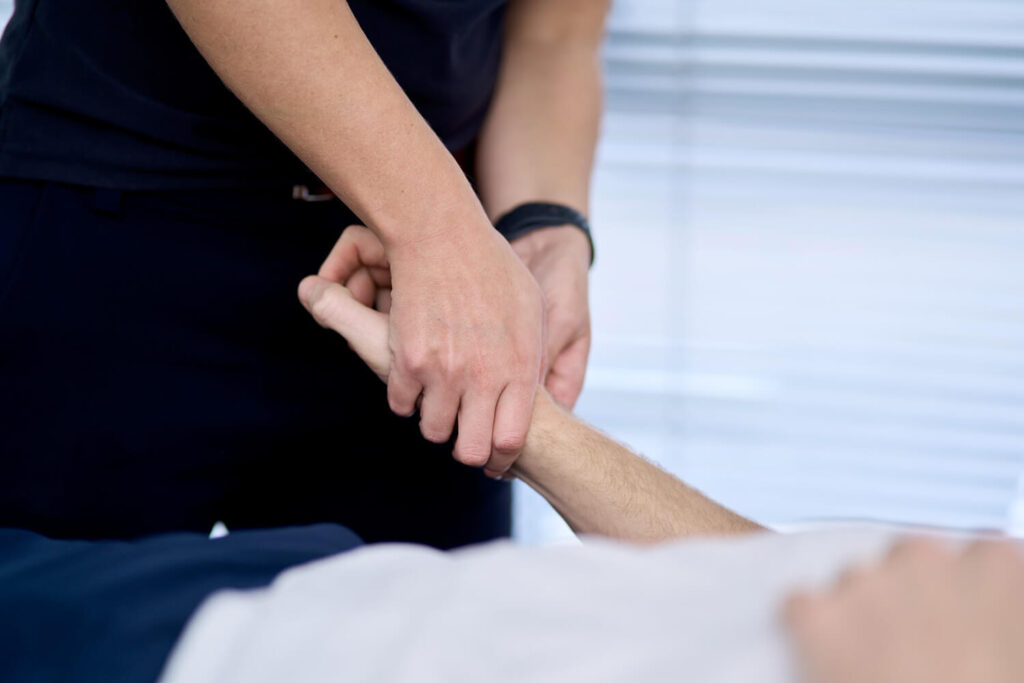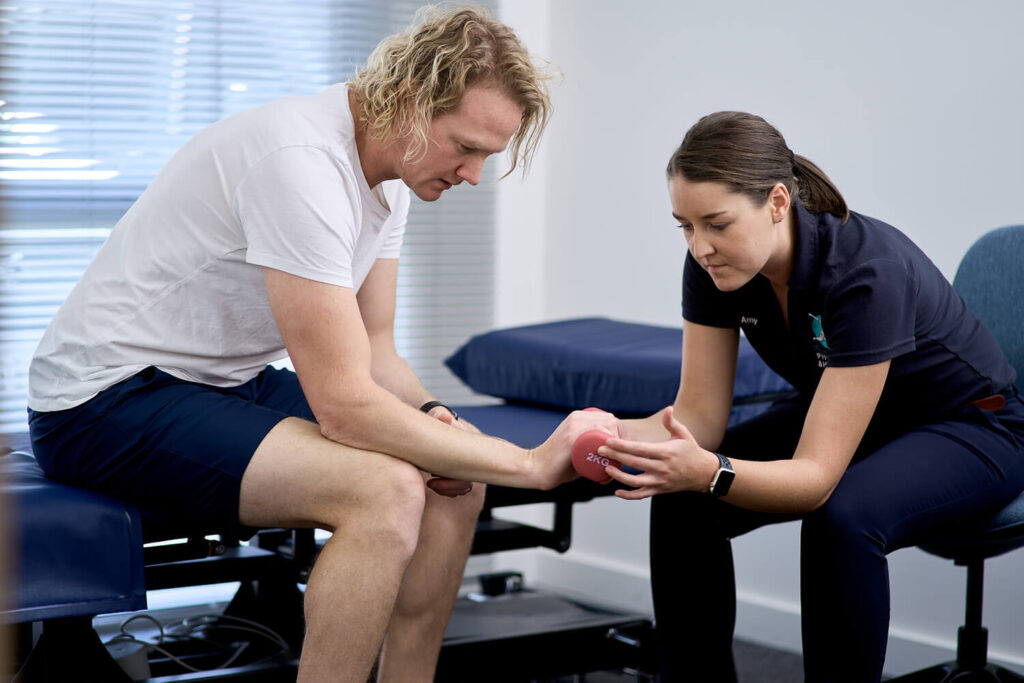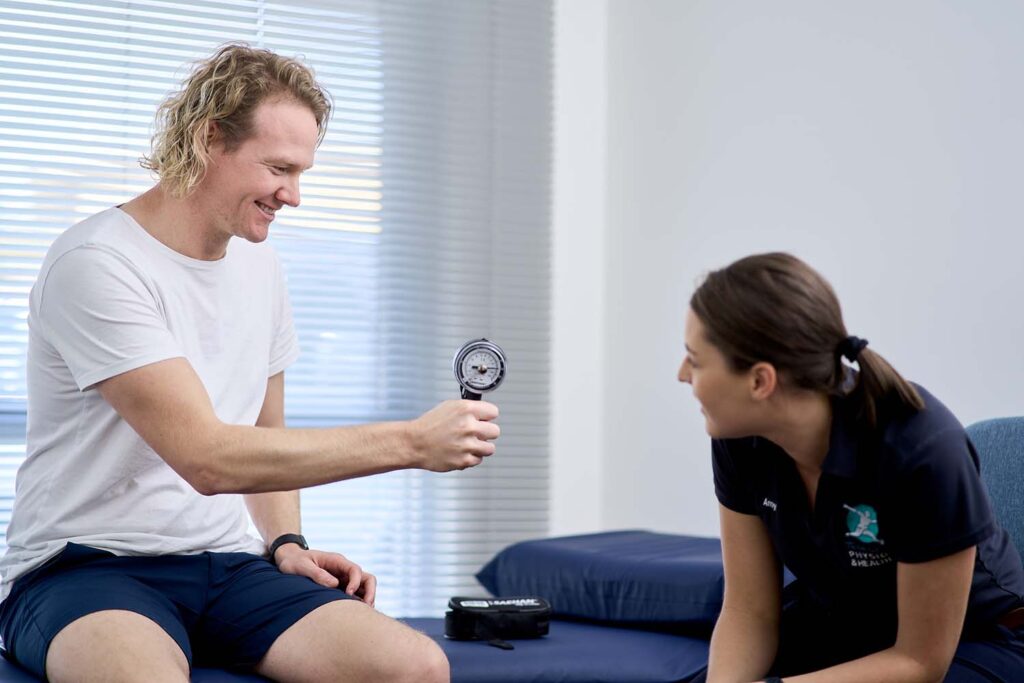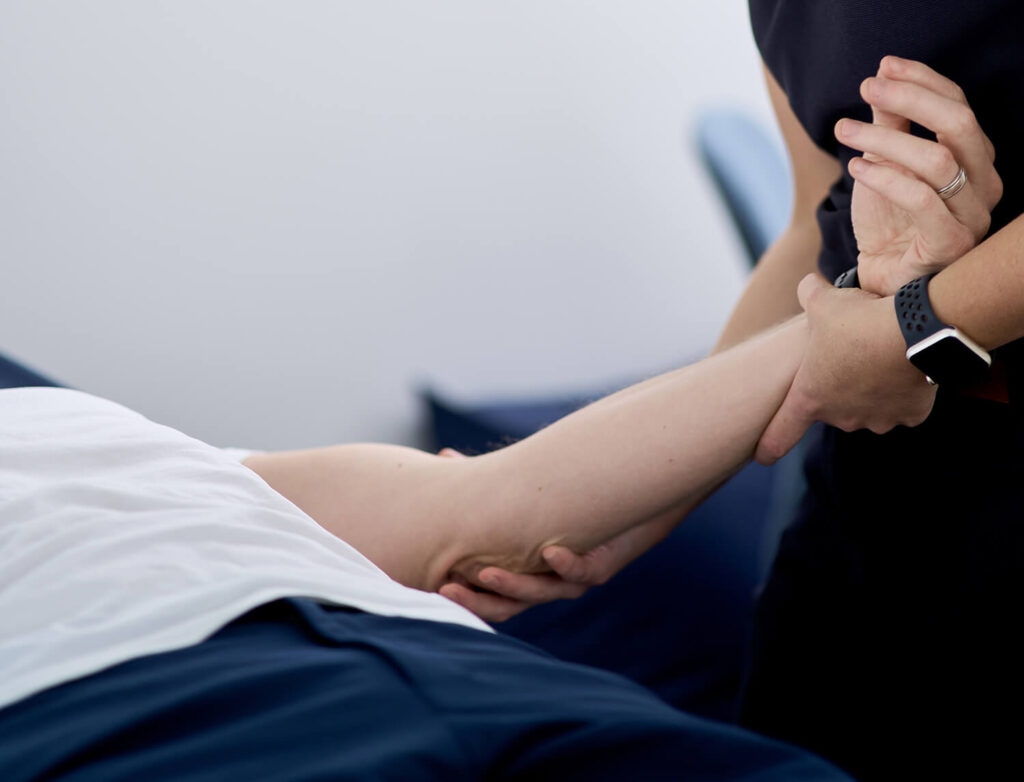If you are suffering from an injury to your hand, wrist or elbow, a hand therapist is often the person to see. What or Who…
Top 5 Tips for Managing Tennis Elbow
Lateral Epicondylalgia also known as tennis elbow is an extremely common condition and typically affects people aged between 30 and 50 years.
Those that have experienced pain in their elbows knows that it can be quite debilitating. Below are some things you can do to help.
Top 5 tips for managing tennis elbow:
- Braces. Tennis elbow braces can be used as an effective way to unload the tendon. By applying a brace you redirect the forces through the elbow away from the injured area, which can help to provide immediate pain relief and keep you doing the things you love.
- Manual therapy. Physiotherapists use varying treatment strategies such as joint mobilisations, soft tissue release and dry needling as effective ways to reduce muscle tightness, joint stiffness and most importantly, pain!
- Load management. Tennis elbow is commonly known as an overload injury. Therefore, it is extremely important we determine what the aggravating activities are and modify the load on the elbow. Overtime, we can gradually reintroduce these activities and return to sport/work/exercise.
- Exercises. Resistance based exercises are an important step in the rehabilitation of tennis elbow. By gradually increasing the load on the tendon we can help with the healing and load capacity of the tendon. This ensures the tendon can handle whatever activity it is that you want to get back too!
- Anti-inflammatory medication. Medication such as Ibuprofen can aid in reducing the pain and allowing you to do your exercises and everyday activities. We recommend taking them under a pharmacists/GPs direction.
Everyone’s recovery from tennis elbow will be different and altered treatment approaches may be suitable. If in doubt, come and see one of us to get you back on track.



